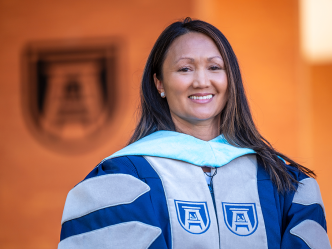For more than 30 years, the medical illustration programs at Augusta University and Johns Hopkins University in Baltimore have held an annual conference nicknamed the “student exchange.”
During the two-day conference in the spring, faculty, students and alumni from both programs share their thoughts on the industry, present their research and make vital connections with professionals from around the country in the field of medical illustration, said Amanda Behr, PhD, chair of the Department of Medical Illustration in the College of Allied Health Sciences at Augusta University.
“Each year, we alternate traveling to Baltimore and hosting in Augusta,” said Behr, who is the only board-certified clinical anaplastologist in the states of Georgia, South Carolina, Alabama and Tennessee. “We call it the ‘student exchange’ because it is a great opportunity for faculty from other programs to teach our students and, likewise, for our faculty to teach their students.
“We present on different topics, and there are external guest speakers that come as well,” she added. “So, instead of just a mini conference, it really is targeted to our students. Our graduating students also have an opportunity to present their research, so they get that valuable experience and get feedback from the other faculty. We find that the conference provides a good exchange of ideas.”
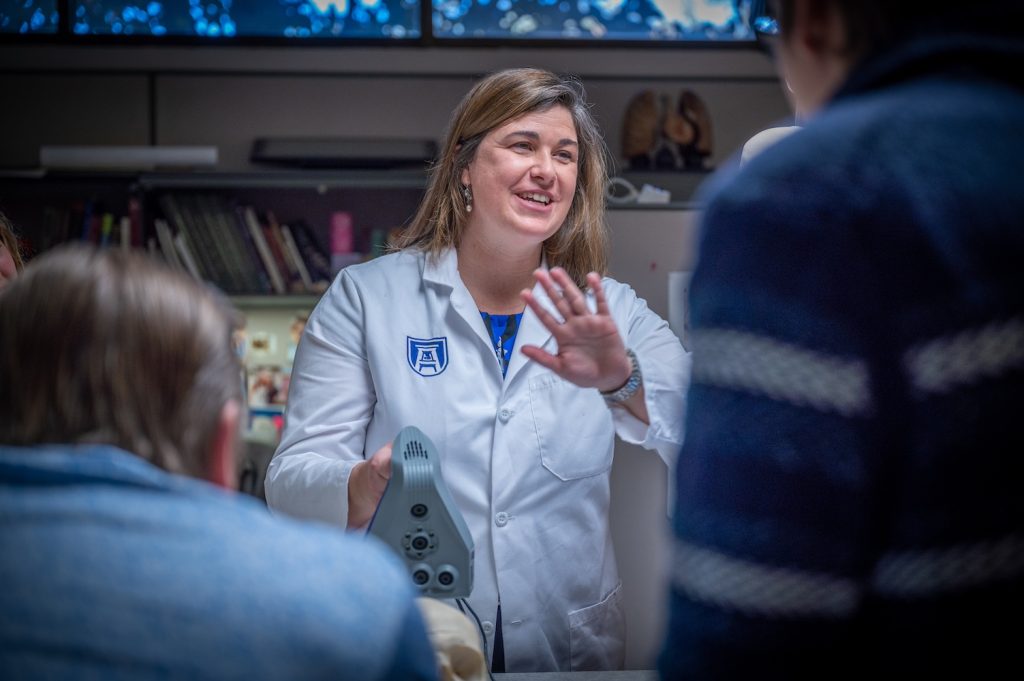
Established in 1911, Johns Hopkins had the very first program in medical illustration in the world. By 1948, the Medical College of Georgia was the first to establish a graduate program in medical illustration.
“Here at Augusta University, we train the next generation of scientific communicators. The medical illustration students, when they graduate from our program, have a wonderful skillset with creative problem solving really targeted toward health care.”
Amanda Behr, PhD, chair of the Department of Medical Illustration in the College of Allied Health Sciences at Augusta University
The medical illustration program at Augusta University has been continuously accredited since 1967, and it is one of just four programs in the United States accredited by the Commission on Accreditation of Allied Health Education Programs.
“Here at Augusta University, we train the next generation of scientific communicators,” Behr said. “The medical illustration students, when they graduate from our program, have a wonderful skill set with creative problem-solving really targeted toward health care. So, our students go into health care settings and make science come to life, whether it’s illustration or animation. There’s such a great need to explain science, and our students are trained to do that here, and they do a wonderful job at it.”
Making lifelong connections
The student exchange conference also allows faculty and students to make lifelong connections with other medical illustrators, Behr said.
“When students experience this exchange program, they create friendships that are lifelong,” she said. “In fact, Mike Jensen, who works with me in the Department of Medical Illustration, he and I met on one of these exchanges. At the time, I was a student at Johns Hopkins, and he was a student at the Medical College of Georgia.”
Behr eventually worked with some of Jensen’s former classmates over the years and ended up accepting a position at Augusta University in 2013.
“The connections that you make at these conferences lead to jobs and networking relationships in the future,” Behr said. “And now Mike Jensen and I work together. That is a connection that we formed 25 years ago in grad school. I think it’s a good illustration of why these conferences are so important. The student exchange is a wonderful foundation.”
This year’s trip to Johns Hopkins was particularly unique because it had a special stop along the way.
Fifteen medical illustration students and three faculty members had the opportunity to stop in Washington D.C. and meet with U.S. Rep. Rick Allen, who serves Georgia’s 12th District, which includes Augusta-Richmond County.
“It was an honor to welcome students from Augusta University’s medical illustration graduate program to our nation’s Capitol building,” Allen said. “As one of only four such programs in the country, I enjoyed hearing more about their unique learning experience, and I wish them nothing but success as they continue their education and join our health care workforce.”
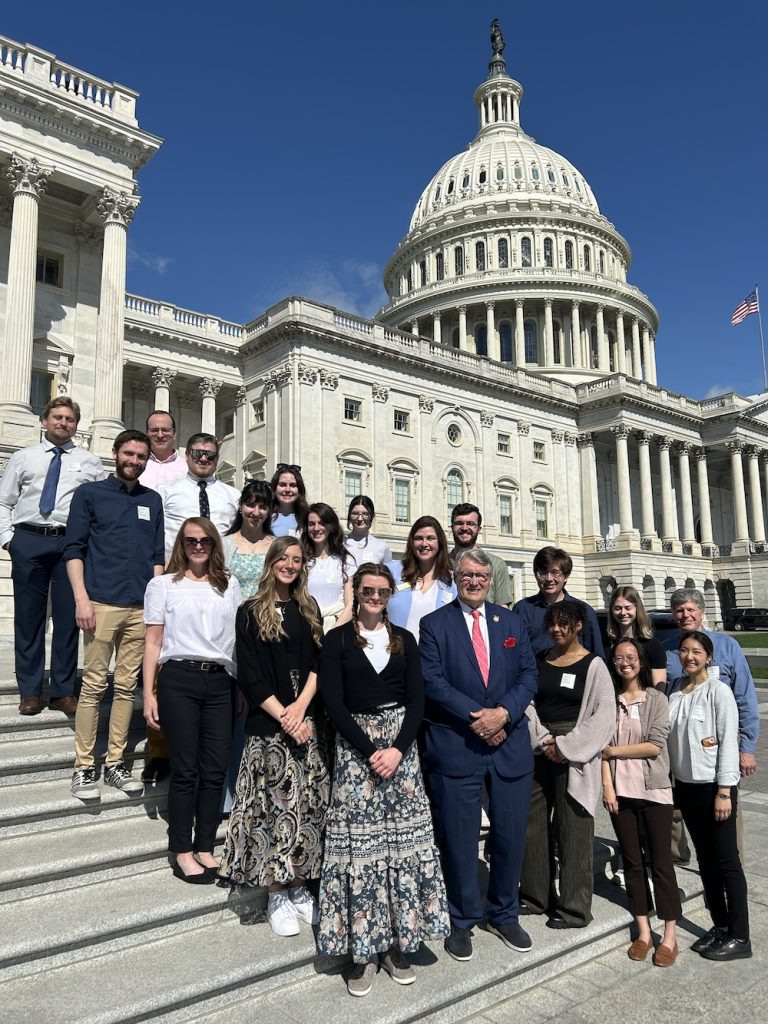
Monty Philpot Brock, the director of federal relations at Augusta University, arranged for the students and faculty to meet Allen and his staff and tour the U.S. Capitol.
“Thank you to Congressman Allen and his team, who provided Augusta University students and faculty with a once-in-a-lifetime opportunity to witness the legislative process in motion,” Philpot Brock said. “We appreciated being able to share the unique story of AU’s medical illustration program and are grateful for Congressman Allen’s leadership and hospitality.”
“It was an honor to welcome students from Augusta University’s medical illustration graduate program to our nation’s Capitol building. As one of only four such programs in the country, I enjoyed hearing more about their unique learning experience and I wish them nothing but success as they continue their education and join our health care workforce.”
U.S. Rep. Rick Allen, who serves Georgia’s 12th District
The visit to the U.S. Capitol was a wonderful and unique opportunity for the medical illustration students, Behr said.
“Monty arranged for us to meet with Rep. Allen, and his team took us in small groups all around the Capitol building. They gave us a great behind-the-scenes tour,” Behr said. “The students got to see our government in action. And then, that afternoon, we toured the National Museum of Natural History and the National Gallery of Art before heading to Baltimore.”
Building a bond and learning together
Noah Smith, one of the medical illustration students who went on the trip, said the entire experience was unforgettable.
“I’m the class president, so in our department meetings, Amanda Behr had been talking about how there was a potential of going to meet our representative and telling him a little bit about the program and talking about Augusta University,” Smith said, smiling. “I was really pushing for it because I had been to D.C. before, but a few of my classmates hadn’t been, so it was a good opportunity for them. But I also hadn’t ever been to the Capitol building, so that was really cool to see the legislative process up close. We even went into the House Chamber with the House of Representatives.”
After touring the Capitol, Smith and some of his classmates went to the anthropology exhibit at the Natural History Museum and later took scooters to the Lincoln Memorial.
“Honestly, that day in D.C., it was probably my favorite day of the medical illustration program so far,” Smith said. “Our medical illustration class is super close. We hang out all the time. I feel like we’re never not gathering outside of school. But the D.C. trip and the Johns Hopkins exchange were particularly great because I feel like we really bonded as a class even more.”
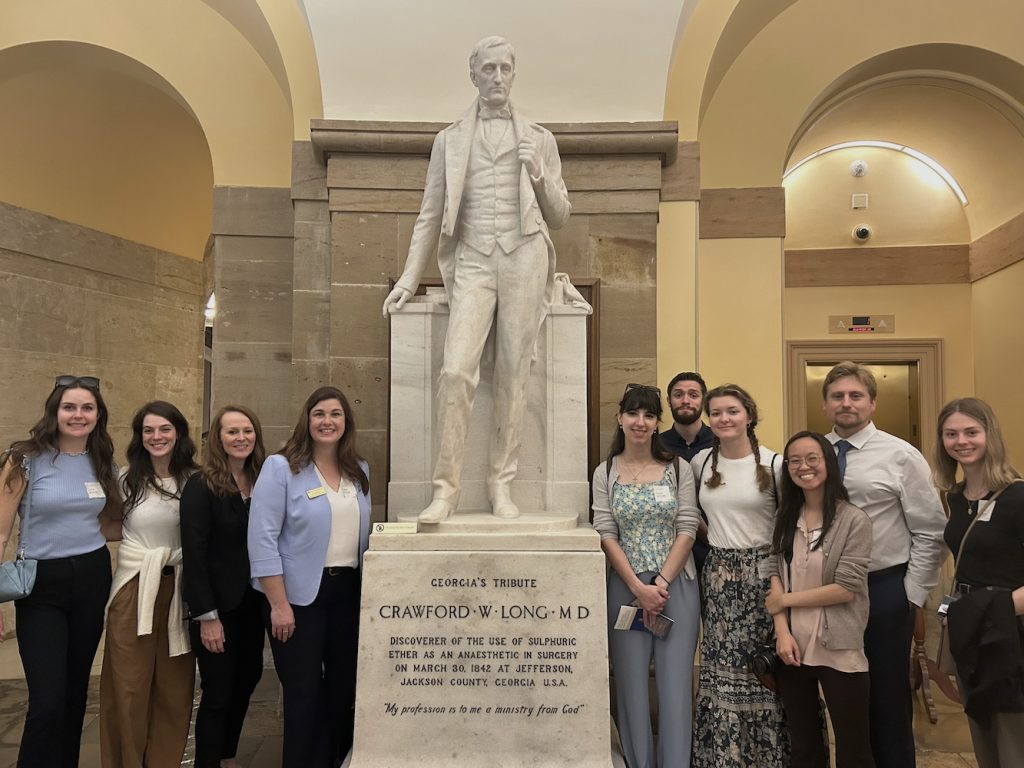
Not only did the students get to know one another better, but they also had an opportunity to interact with the professors, Smith said.
“I’d say the whole trip brought us even closer than we already are,” Smith said, laughing. “At this point, we’re now at a sibling level.”
“My favorite part of the conference was getting to hear the industry professionals talk, tell you about their experiences, tell you about what they’re doing and what’s happening on the ground in the industry. That was truly invaluable.”
Samuel Strecker, a recent graduate of the medical illustration program at Augusta University
Samuel Strecker, who recently graduated from the medical illustration program in May, said the student exchange conference gave him the opportunity to hear research presentations and master’s projects from the seniors at Johns Hopkins.
“It was really interesting seeing the work that they’re doing and getting to pick their brains a little bit,” Strecker said. “It helps you forge a nice bond as you’re entering into the profession, and it builds this camaraderie and a good network that you can rely on throughout your career.”
Strecker, who recently accepted a position as the healthcare visualization specialist in the medical illustration department at Augusta University, said he enjoyed meeting all the professionals at the conference and learning about the various paths they took after receiving their degrees.
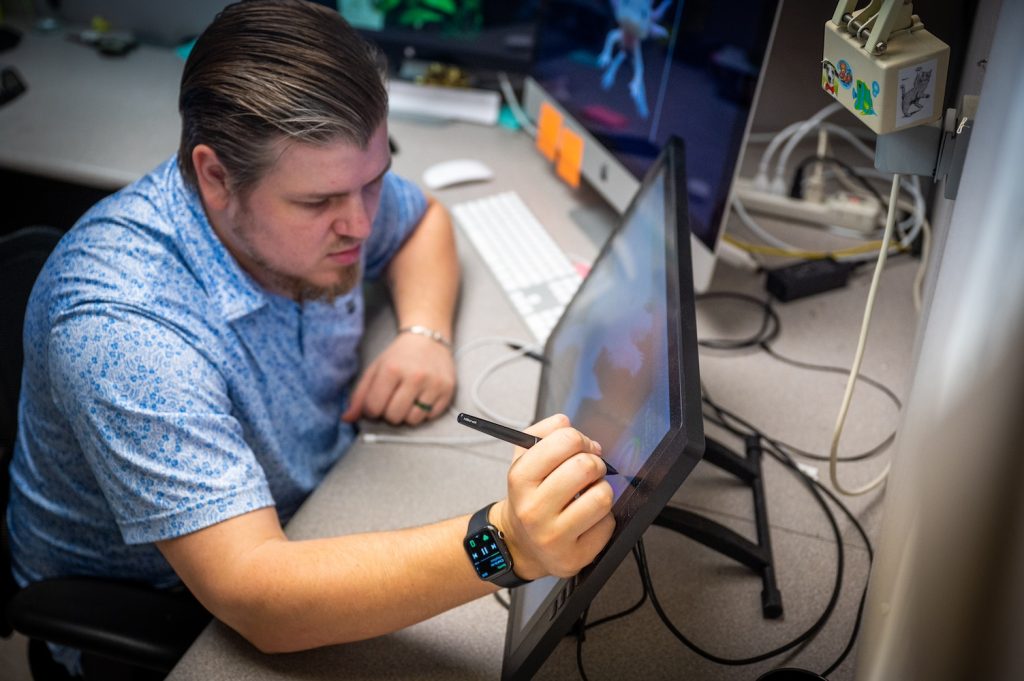
“It’s always just so interesting to see the creativity that these professionals use when they go about their life plan and where they end up,” Strecker said. “Obviously, there is always the traditional medical illustrator path of doing surgery illustrations or patient education illustrations, but a lot of these professionals also have gotten into various design companies and these high-end creative positions that deal a lot with taking data visualization and scientific problem solving and combining that with creativity.”
“In fact, my favorite part of the conference was getting to hear the industry professionals talk, tell you about their experiences, tell you about what they’re doing and what’s happening on the ground in the industry,” Strecker added. “That was truly invaluable.”
Next year, the medical illustration students from Johns Hopkins will travel to Augusta for the student exchange conference, Behr said.
“When the students from Johns Hopkins come down here, we bring alumni who are working at the Centers for Disease Control and Prevention and other groups to have a wonderful exchange of ideas from different institutions,” Behr said. “And this conference doesn’t just benefit the students. For me, it is great to sit down with other faculty members and talk about what is working and what is not working and how we train our students. I really value the connection with the other faculty and that peer/mentorship in teaching in medical illustration.”
 Augusta University
Augusta University


